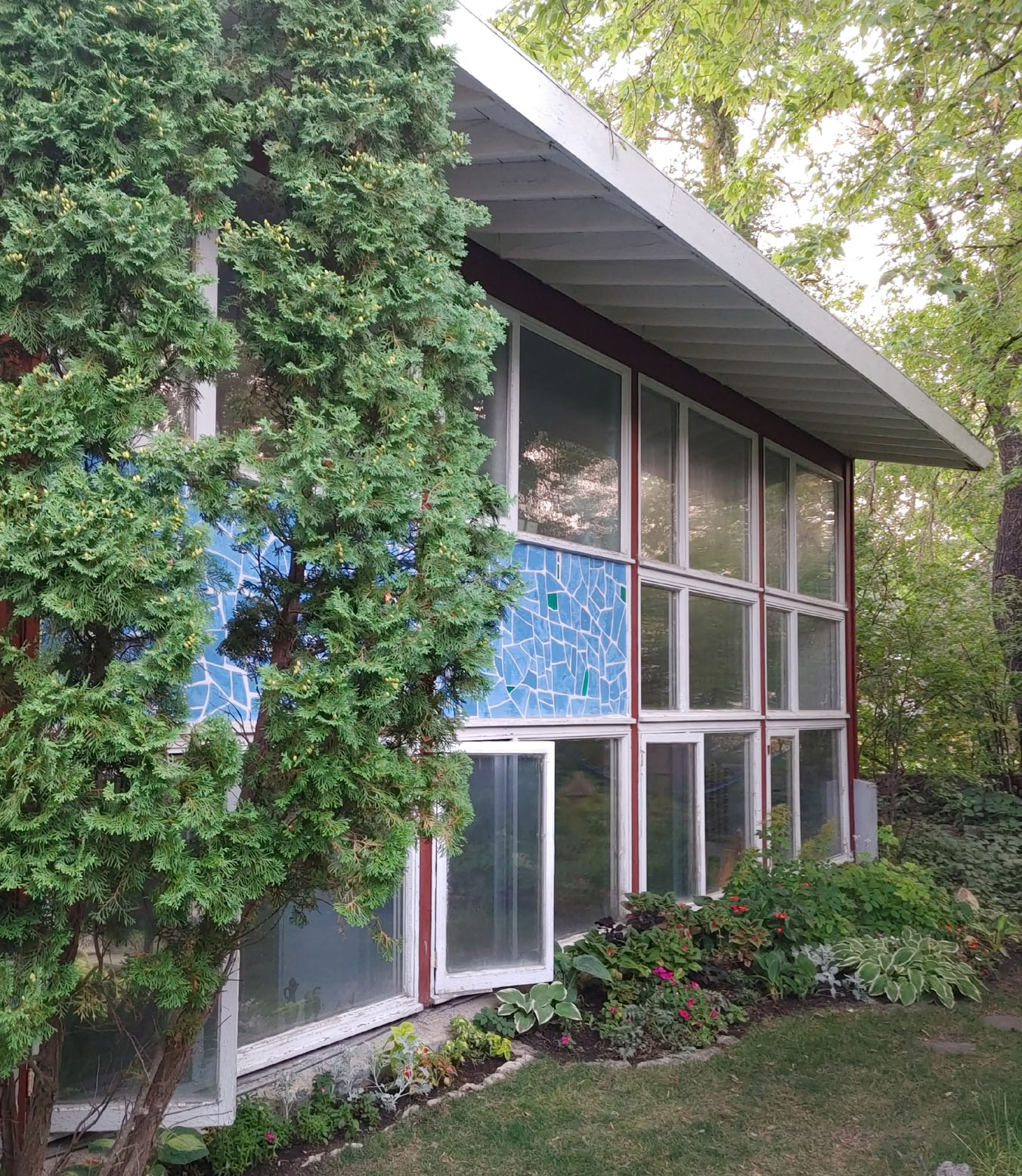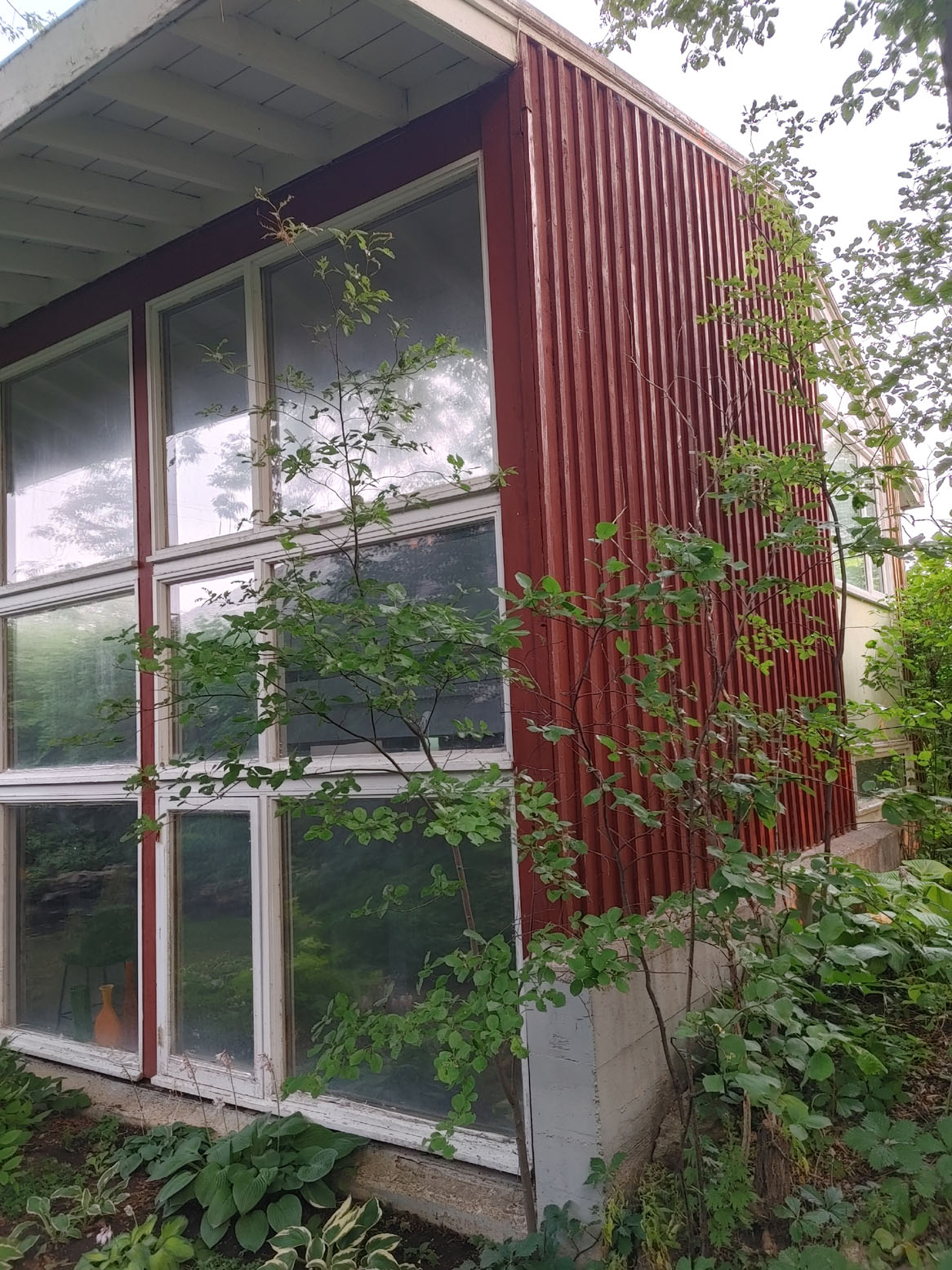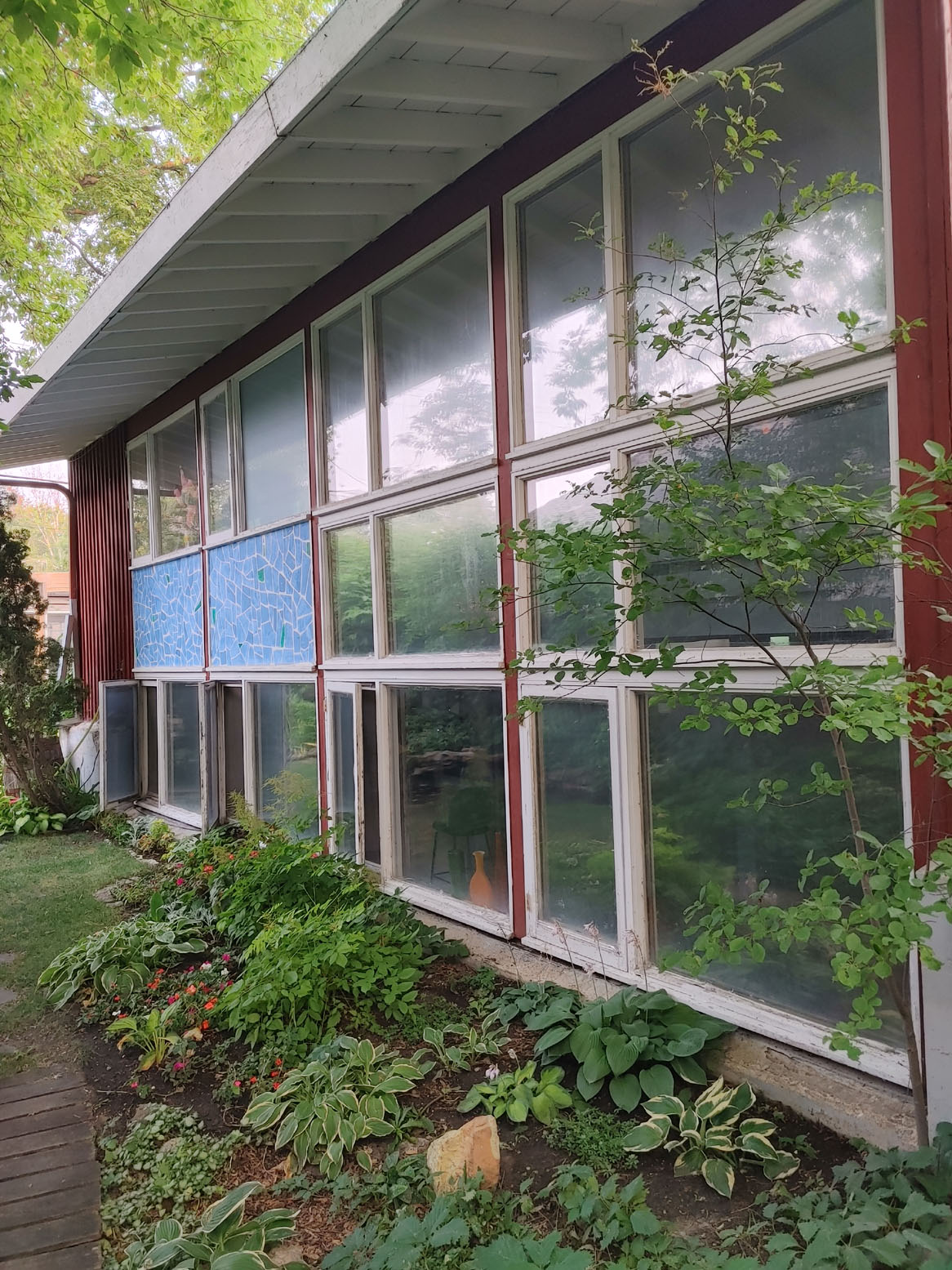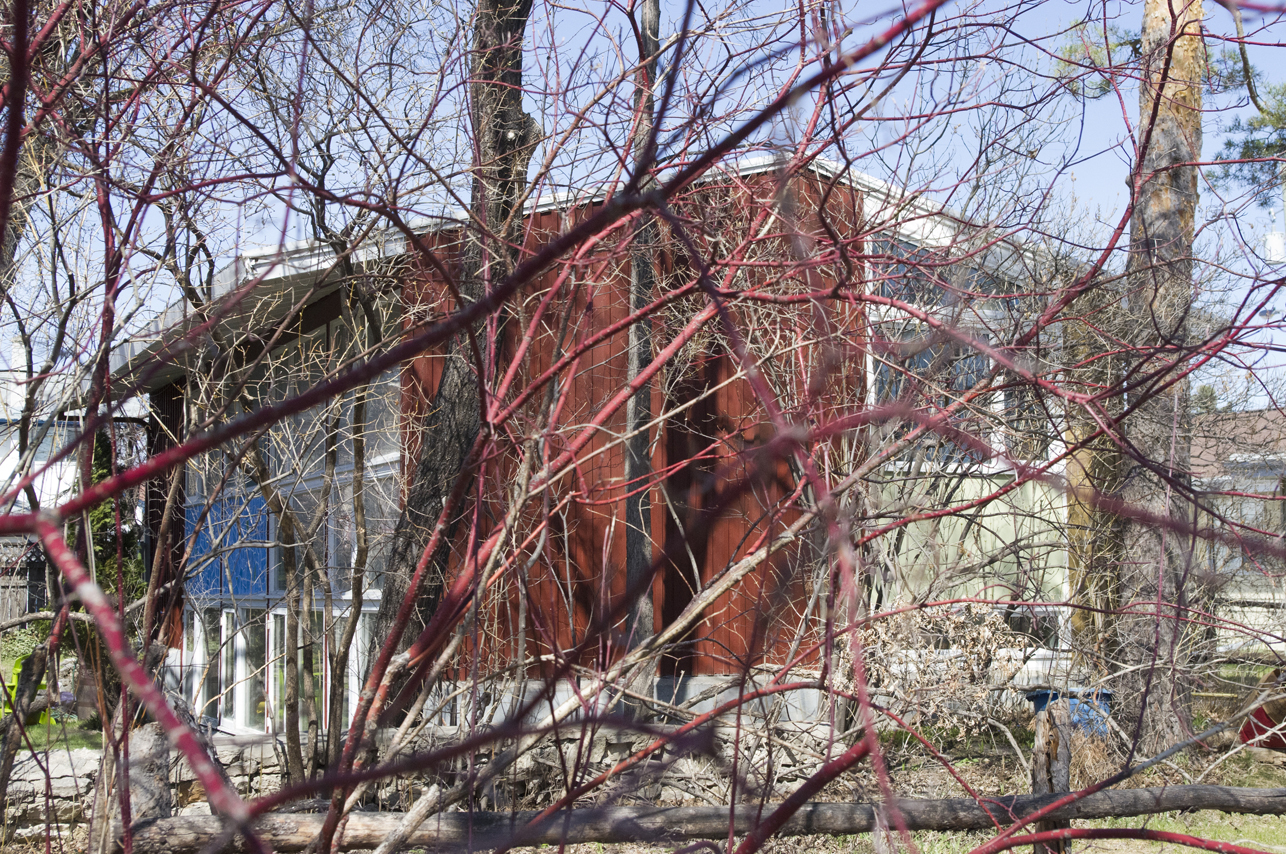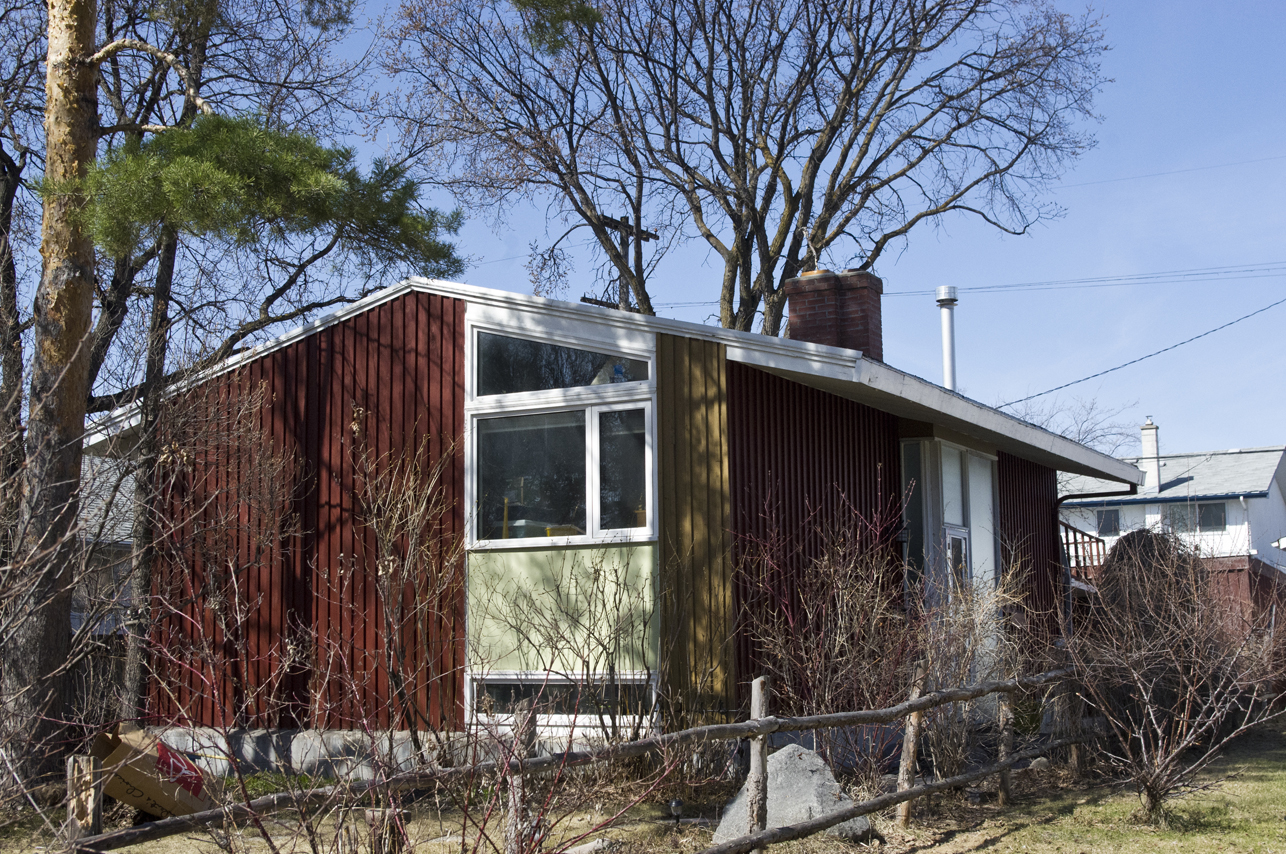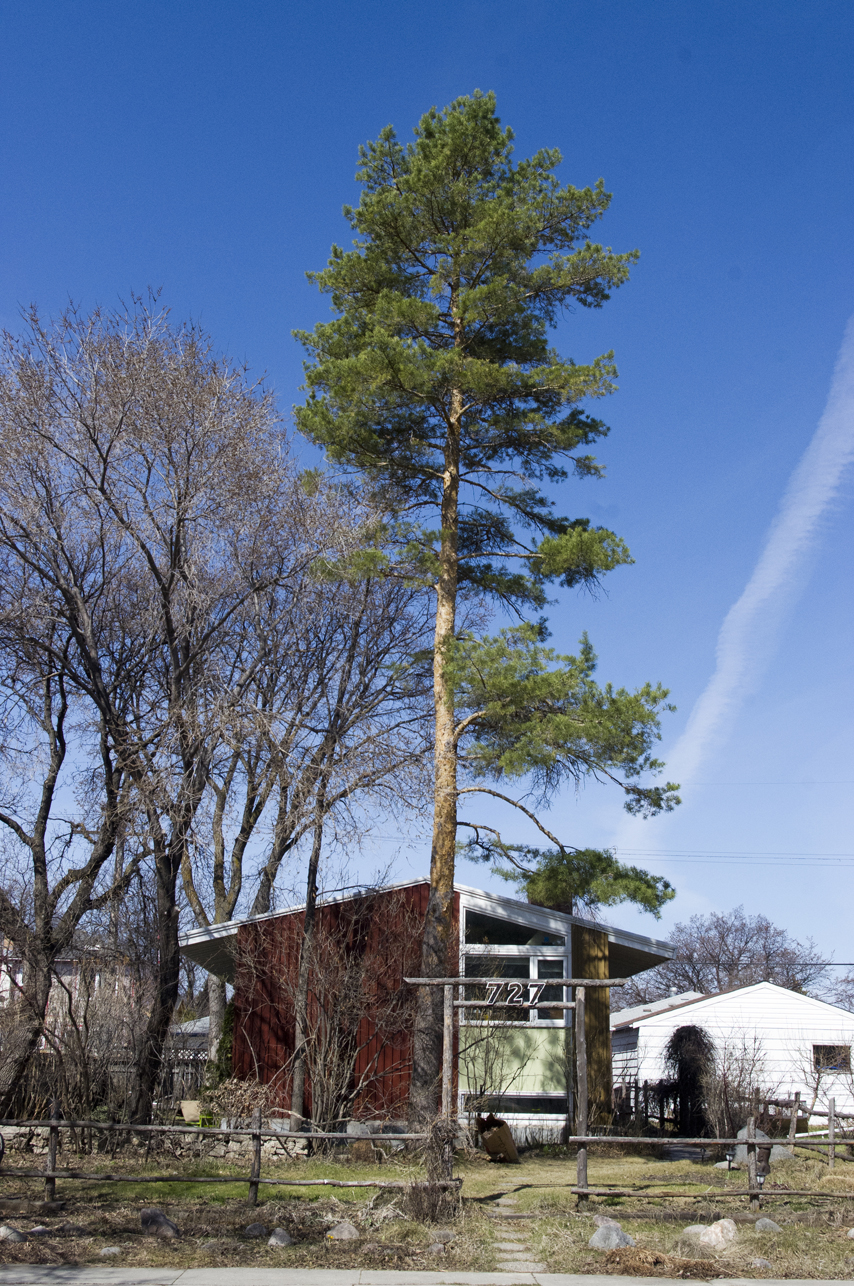Buildings
727 Queenston Street
| Address: | 727 Queenston Street |
|---|---|
| Original Use: | Dwelling |
| Constructed: | 1955 |
| Architects: | Allan Waisman |
More Information
727 Queenston Street was the Waisman family home from 1956. Designed by Allan Waisman (possibly as his architecture thesis project) the house is modest in size but well-designed. 727 Queenston Street is a multi level house with an entry way at grade located on the north face. The landscaping allows for the house to open up on the south side with many rectangular windows that light a variety of spaces. This wall of windows, is for the most part, shaded by the deep eaves found on the north and south sides of the house, and also has beautiful mosaic tile panels where no windows appear.
The impressively tall tree in front of the house inspires the vertical masses worked into the front (east) and north façade. On the front of the house, this vertical mass is made up of windows of varying size and shape that span from the exterior ground up to the underside of the peak of the roof providing a contrasting entity in the vertical wood cladding. A grouping of frosted glass windows joins the door to cohesively create another vertical block, which is slightly extruded from the north face. This provides another visual break in the façade, and also brings a nice quality of light into the foyer.
River Heights is a neighbourhood in Winnipeg’s southwest quadrant with a population of approximately 56,000. It is located south of the Assiniboine River, west of Cambridge Street, east of Edgeland Street and north of the Canadian National Railways mainline. Historically the area was one constituent in the larger Parish of St. Boniface, though by 1882 it had been annexed by the City of Winnipeg. A key role in the neighourhood’s development was the firm of Howey and Borebank, who instigated the sector’s subdivision in the first decade of the twentieth century. The firm advertised the area thusly: “The property being high, well wooded and yet within twenty minutes of the business centre makes it a most desirable residential section.” This early growth was facilitated by the establishment of Assiniboine Park in 1904 and construction and expansion during this period of the Academy Road streetcar line. Another element in selling the area was the creation of Wellington Crescent as a prestige home location, treated as a “magnificent drive leading out to the new suburban park” of a width near three times that of a regular road. Over the proceeding decades the area grew south and eastward, reaching a population of 70,650 in 1971; at times this growth was facilitated by the National Housing Act. The neighbourhood contains a number of examples of modern architecture, exemplified in schools, religious structures and businesses, as well as in homes, particularly concentrated in the post-war districts located south of Corydon Avenue. Largely comprised of north-south oriented residential suburban streets, the area is known for its canopy of elm trees which line many of its boulevards.
Design Characteristics
| Materials: | Vertical wood siding, stucco, glazing, frosted glass, glass tile mosaic |
|---|---|
| Size: | 752 square feet |
| Style: | Bi-level |
| Suburb: | River Heights |
| Frontage Direction: | East |
- Primary entrance located at grade on the north elevation.
